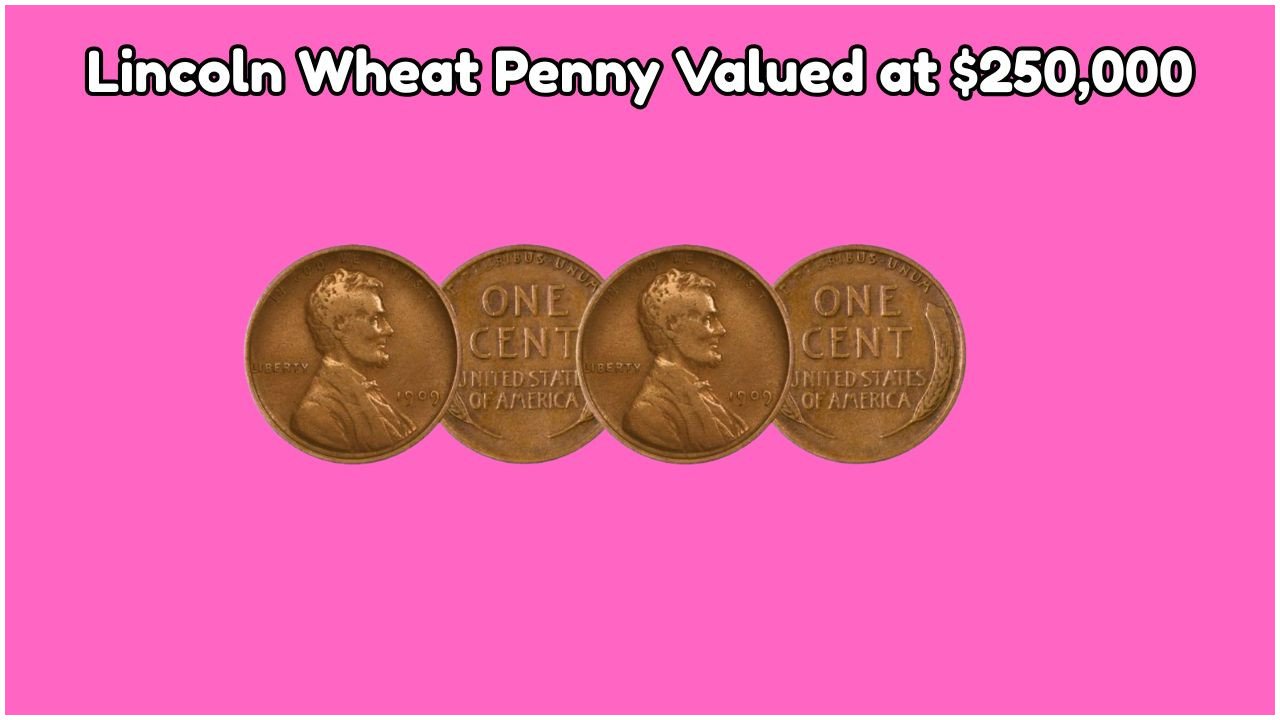Lincoln Wheat Penny Value
Table of Contents
Lincoln Wheat Penny: A Collector’s Treasure
Lincoln Wheat Penny: The Lincoln Wheat Penny is a cornerstone in the realm of coin collecting, often sparking the interest of both novice and seasoned numismatists. Minted from 1909 to 1958, these pennies are renowned for their iconic design, featuring a bust of President Abraham Lincoln on the obverse and two wheat stalks on the reverse. While most of these coins are valued at just a few cents, certain rare editions have fetched astonishing sums at auctions, making them a sought-after piece for collectors. The allure lies in their historical significance and the potential for hidden treasures within everyday change.
- The Lincoln Wheat Penny was first minted in 1909.
- It features Abraham Lincoln on the obverse side.
- The reverse side displays two wheat stalks.
- Collectors prize these coins for their historical value.
- Rare editions can be worth thousands of dollars.
- Some versions are highly sought after in the numismatic community.
- The design changed in 1959 to the Lincoln Memorial.
Factors Affecting Lincoln Wheat Penny Value
Several factors contribute to the value of a Lincoln Wheat Penny. The most critical determinant is the coin’s mint year and mint mark. Coins minted in certain years, such as 1909, 1914, and 1922, are particularly rare and valuable. Additionally, the mint mark, indicating where the coin was produced, plays a significant role. For instance, coins minted in San Francisco (marked with an ‘S’) or Denver (‘D’) can be more valuable than those without a mint mark from Philadelphia. Another crucial factor is the coin’s condition, or grade. Coins in mint condition, with minimal wear and tear, command higher prices compared to those showing signs of circulation. Lastly, any unique errors or variations in the coin can significantly enhance its value, as collectors often seek these rare anomalies.
| Year | Mint Mark | Grade | Estimated Value | Notes | Rarity | Demand | Market Trends |
|---|---|---|---|---|---|---|---|
| 1909 | VDB | MS65 | $1,000 | High demand | Rare | Very High | Increasing |
| 1914 | D | G4 | $250 | Popular | Rare | High | Steady |
| 1922 | No D | F12 | $500 | Unique error | Very Rare | Very High | Increasing |
| 1943 | S | AU55 | $100 | Steel cent | Uncommon | Moderate | Fluctuating |
| 1955 | D | MS65 | $75 | Double die | Rare | High | Increasing |
| 1958 | P | MS66 | $50 | Last wheat penny | Common | Moderate | Steady |
| 1944 | P | MS60 | $10 | Common | Common | Low | Decreasing |
| 1931 | S | VF30 | $200 | Low mintage | Rare | High | Increasing |
Spotting a Rare Lincoln Wheat Penny
Identifying a rare Lincoln Wheat Penny requires a keen eye and some research. The first step is to examine the mint year and mint mark closely. Coins from the early years, such as 1909 with the VDB initials, are often more valuable. Additionally, look for unique features such as double dies or off-center strikes, which are considered errors and can increase the coin’s value. The condition also plays a crucial role; a coin in pristine condition will fetch a higher price than one that’s worn. Using a magnifying glass to inspect the coin’s details can reveal subtle differences that might enhance its worth. Collectors should also consult up-to-date value guides and auction results to ascertain the current market trends for these coins.

The Lincoln Wheat Penny Valued at $33K, Still in Circulation – Check Your Change Now
- Check for key dates like 1909, 1914, and 1922.
- Look for mint marks such as ‘D’ or ‘S’.
- Inspect for errors like double dies.
- Assess the coin’s condition or grade.
- Use guides to evaluate current market values.
- Consult auction results for price trends.
Historical Significance of Lincoln Wheat Pennies
The Lincoln Wheat Penny holds a special place in American history, not just as currency, but as a symbol of the era it represents. Introduced in 1909 to commemorate the centennial of Abraham Lincoln’s birth, it was the first U.S. coin to feature a president. This marked a significant departure from the traditional depictions of Lady Liberty or allegorical figures, reflecting a shift towards honoring real historical figures. The coin’s design, with its wheat stalks, symbolized prosperity and growth, resonating with the agricultural roots of early 20th-century America. During its nearly 50-year run, the coin witnessed significant events, from the Great Depression to World War II, making it a tangible piece of history that collectors cherish for both its aesthetic and historical value.
- Commemorates Abraham Lincoln’s birth centennial.
- First U.S. coin to feature a president.
- Symbolizes early 20th-century American values.
- Reflects significant historical events.
- Valued for both historical and aesthetic significance.
Why Lincoln Wheat Pennies Are Valuable
Lincoln Wheat Pennies are not merely valuable due to their age, but because of their history and the stories they tell. Each coin is a witness to a bygone era, carrying with it the economic and social narratives of its time. Coins from certain years were minted in limited quantities, making them rare finds for collectors today. Furthermore, the artistry involved in their design, from Victor David Brenner’s initials on the 1909 edition to the intricate wheat ears, adds to their appeal. The thrill of discovering a rare penny in circulation or a forgotten collection evokes a sense of adventure and connection to the past, enhancing their sentimental and monetary value.
- Age alone doesn’t determine value.
- Historical significance plays a major role.
- Limited mintages increase rarity.
- Artistic design adds to appeal.
- Discovering rare editions thrills collectors.
- Sentimental value enhances worth.
Investing in Lincoln Wheat Pennies
Investing in Lincoln Wheat Pennies can be a rewarding venture for those with a keen interest in numismatics and history. As with any investment, it requires research and understanding of the market dynamics. Collectors should focus on acquiring pennies from key dates and in high grades, as these are more likely to appreciate in value over time. It’s also important to stay informed about market trends and auction results, as prices can fluctuate based on demand and economic factors. Establishing relationships with reputable dealers and joining collector communities can provide valuable insights and opportunities for expanding one’s collection. With careful consideration and strategic purchases, Lincoln Wheat Pennies can be both a fascinating hobby and a sound investment.

The Rare Bicentennial Quarter Valued at $11 Million, Still in Circulation
FAQs About Lincoln Wheat Pennies
What makes a Lincoln Wheat Penny rare?
The rarity of a Lincoln Wheat Penny is determined by its mint year, mint mark, condition, and any unique errors it may possess.
How can I determine the value of my Lincoln Wheat Penny?
To determine the value, examine the mint year and mint mark, assess the coin’s condition, and consult current value guides and auction results.
Are all Lincoln Wheat Pennies valuable?
Not all are valuable; only those with specific characteristics such as rare mint years, mint marks, or errors hold significant value.
Where can I sell my Lincoln Wheat Penny?
You can sell them through coin dealers, auctions, or online marketplaces specializing in numismatic items.
What should I look for when buying a Lincoln Wheat Penny?
Look for key dates, mint marks, condition, and any errors or unique features that may enhance the coin’s value.
Disclaimer: This article is written for general informational purposes only. Please get the latest and accurate information from the official website.



